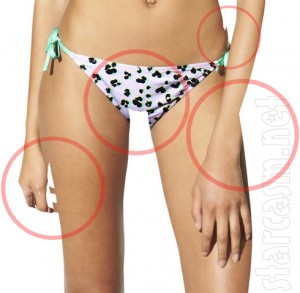By KELLY BRODY
Photos have leaked of Lady Gaga’s Versace campaign, but they’re not the flawless, Donatella-esque images we’ve all seen. Rather, they’re the un-photoshopped versions, and the results are a little jarring.
While Gaga looks streamlined and airbrushed in the published images, she looks undoubtedly more realistic in the non-retouched pictures. She sports no makeup, chapped lips and bruises on her legs.
The perfection of the image goes against Gaga’s mantra of “Born this Way,” which celebrates the beauty in imperfection. Many publications, though, continue to Photoshop their images to obscene amounts.
Target recently put up an image on their website of a bathing suit model who has a rather rectangular area missing from her upper thigh. This was a Photoshop mishap that was created in order to give the model a “thigh gap.”
Multiple other Photoshop fails have occurred, and many are those which were created to achieve a skinner look for the models.
The heavy-handed Photoshopping of already thin models has given rise to the obsession with being thin and having a thigh gap. Tumblr, a social media blog site, has also contributed to the thigh gap obsession, as many girls reblog and post images of skeletal looking girls with the hashtag “thigh gap” and “thinspo” or thinspiration.
The problem has gotten so real that now when you search thigh gap on tumblr, a message comes up entitled, “Everything okay?” that gives numbers to eating disorder help centers.
As a mode of activism, American Eagle’s lingerie line, aerie, launched their #aerieReal Campaign, in which they vow to use real girl models of all sizes who are not retouched by Photoshop. It is such a change to see images on the computer screen that are not the idealized female form.
While I appreciate the use of real girls, I do have to say that it is better to view clothes on a more perfected image. Yet there is a difference between a little tweak here and there, and a complete disregard for humanness. Publications and companies should use Photoshop with a lighter hand.


